While Costa Rica has plenty to offer, marvelous rain forests, blissful waterfalls, long hikes, endless white sandy beaches, horseback riding, snorkeling and scuba diving, it might be mostly famous for being a surfer’s paradise. All year around surfers from all over the world travel to Costa Rica to surf the world-famous waves. Costa Rica has surf spots for the most adventurous and experienced surfers but also offer beginner surf. There are also some amazing surf camps here that caters to all levels of surfers as well.
Being considered the safest country in Central America, Costa Rica has become quite a tourist scene. Which has its pros and cons. It has become much easier to travel around in the country over the past few years. Costa Rica still lack proper infrastructure, and even if it takes time now, well at least you´ll get there, which was never a guarantee before. There is also a network of very small domestic airports, served by tiny 10-seater propeller planes that makes travelling over any kind of distance a lot easier.
The different surf destinations along the Pacific and Caribbean coast offers plenty of different types of accommodation, everything from hostels to luxury villas. But because of the high number of tourists, especially in high season, the options get booked fast and the prices are very high compared to other countries in this region. That being said, Costa Rica is a place you don´t want to miss out on. Whether you´ve never surfed before and want to give it a go, or if you´re seeking those extra thrilling waves, you should put Costa Rica on your surf bucket list!
Surfing Costa Rica
When to visit | Getting there | Top 5 Costa Rica Surf Spots | Tamarindo | Santa Teresa | Manuel Antonio | Dominical | Nosara | Top Surf Travel Tips
When to visit
While most of the world has traditional seasons like winter, spring, summer, and fall, Costa Rica experiences a wet season and a dry season. Temperatures are warm all year round with the exception that the wet season has a bit cooler temperatures and a lot more rain, obviously.
Dry season
The dry season runs from mid-November to April, with occasional showers running through December. I have to say that in my experience, the locals are right, the dry season runs like a clock. Mid-November, boom everything is dry and the tourists arrive. After that, it’s cloudless and dry skies with temperatures until May. Offshore winds brings clean and consistent surf (on the pacific coast) and you can basically surf all day long. It is the perfect time to go surfing for those who are beginners or which to learn how to surf. During dry season the waves are smaller and more consistent than during wet season. During the dry season, the jungle dries up a bit so you might not encounter the waterfalls in all their glory, but on the other hand all restaurants, bars and tour operators are open daily, which is not necessarily the case during wet season.
Wet Season
Just as dry season is very predictable, so is the wet season. After months of rain free days, the skies open up in May and the wet season with heavy daily tropical rainfall begins in full force. The majority of the wet season (also known as “green season”) begins with sunny mornings, followed by heavy tropical showers in the afternoon and evenings. However during September and October, the rainiest months, rain often falls twenty four seven. Some, but not all, business will be closed. Due to the wet conditions, the wet season tends to be less crowded and tours and accommodation are usually cheaper than during the rest of the year. While the rainfall might scare regular tourists off, the waves tend to be bigger and the waters are more empty, meaning the conditions are perfect for more advanced and pro surfers. The jungle surroundings become lush and green and there is absolutely nothing that says you shouldn´t go to Costa Rica during wet season, especially not if the main purpose of your travel is surfing.
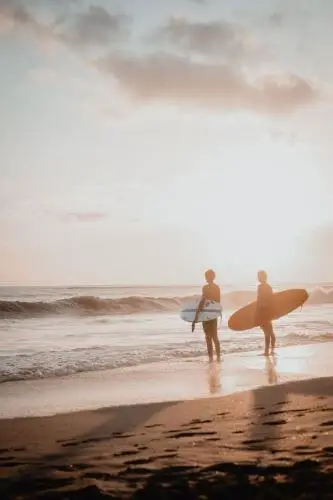
Getting There
Costa Rica has two international airports: Juan Santamaria Airport in the capital of San Jose (SJO), and Daniel Oduber Quirós Airport, also known as Liberia International Airport (LIR), in the Guanacaste region. If you’re heading north, or if you´re coming from or going to Nicaragua, flying into Liberia Airport is your best option. If you’re heading anywhere on the central coast, south, or Carribean side, get a flight to the capital San José. The airport in San Jose is also your best option if you plan to travel around, since it is so centrally located. Usually ticket prices don´t differ a lot between the two airports, however, traveling by ground in Costa Rica takes time. My recommendation is therefor to fly in to the airport that suits your destination the best, or where you have the best connecting domestic flights.
Top 5 Costa Rica Surf Spots
Tamarindo
Tamarindo is a well known popular surf town, about 4 hours drive from San José, or 2 hours from Liberia Airport. With the film The Endless Summer, this place became notorious among surfers and especially beginners. Even if there are plenty of surf spots for more advanced surfers as well. Tamarindo is located in the province of Guanacaste on the Nicoya Peninsula. It used to be a sleepy fisherman’s village and during rainy season it is still very relaxed, but during dry season surfers flock to catch some waves and enjoy the surrounding tropical beauty. Best time to surf in Tamarindo is from March to October, making for a long surf season that continues even after the regular tourists have left.
Playa Tamarindo
The long white sand Tamarindo beach is situated right outside the city. Strong currents during tidal fall creates worlds class surfing, especially on the breaks of Pico Pequeno and El Estero. These breaks are for more advanced surfers, but luckily there are plenty of surf schools nearby to help any newcomers improve their skills.
Skill level: Advanced
Playa Langosta If you head south from Playa Tamarindo, you’ll find a smaller less crowded beach. The beach is secluded and breathtakingly beautiful and the river mouth offers fantastically powerful surf breaks. Playa Langosta offers surf for thrill seekers. And even if it is a lot of fun, it is a challenge even for the local veterans.
Skill Level: Professional
Isla Capitan If you´re a very experienced surfer, you will find that a trip off mainland Costa Rica to Isla Capitan right in front of Playa Tamarindo is well worth it. There are waves to catch on both the north and south side of the island, but only during low tide. If you´re not very advanced or professional it is not recommended to go here. The rocks beneath the waves are considered dangerous even for swimmers.
Skill level: Advanced/Professional
Playa Grande: Basically, if you´re advanced level surfer or above you keep south of Playa Tamarindo, and if you´re less experienced or beginner you hit the north side and Playa Grande. On Playa Grande you´ll mostly find long softer rides making it for a much easier surf.
Skill level: Beginners
Witch´s Rock Situated in Guanacaste, Roca Bruja or Witch’s Rock is praised as a world-class surfer’s spot. With its sea bottom being sandy, it makes it less dangerous for surfers. But quality waves are promised to be found at Witch’s Rock. Those who want to experience the ‘gnarliest’ breaks come to this surfing haven just off the Playa Naranjo beach in Santa Rosa National Park. But don´t worry, Witch´s Rock is actually also perfect for beginners.
Skill level: All
Avellanas This place is good for beginners and intermediates, depending on at what time and where you arrive. Near the big dead tree that acts as a surfing landmark, the waves are usually small and good for beginners. The further away from there you get, the more challenging the waves become.
Skill level: Beginner to advanced

Santa Teresa
Playa Santa Teresa lies at the south-western tip of Costa Rica’s Nicoya peninsula. What started off as a surfing destination is now drawing travelers of all kind. But not in a bad way. Santa Teresa still oozes surf and with the varied beach breaks it has something for everyone. The beach breaks are fun and offers light surfing for beginners and challenging for advanced surfers, and of course everything in between. What makes Santa Teresa even more great and rare is that the surf spots cater to all sorts of levels. And even if you travel in a group with mixed skill-levels you usually can surf together without splitting the group too much. There are plenty of spots that can entertain both improving intermediates and total beginners all at the same time. On the days when it might rain or the surf is not to your liking there is plenty of other things to do in Santa Teresa. You can choose anything from yoga to hiking waterfalls, day trips to nature reserves or you know, just chill in a hammock on the beach.
Playa Hermosa North of Santa Teresa is Playa Hermosa. Here the lineup crowd is always smaller because it’s further from the heart of Santa Teresa town. With head high swells and a sandy bottom with rocks and rip currents it is best suited for intermediate-level surfers, this break also provides fun waves for the experienced surfer.
Skill level: Intermediate
Playa Carmen Playa Carmen is for thrill seekers, with a SW orientation the surf here gets gnarly and at sunset you´ll see people flocking at the beach to watch the spectacle. Overhead to double overhead waves are common here. They better ones run right but you can also go left. The waves are mostly hollow making it a bit too challenging for the beginners.
Skill level: Intermediate to advanced

Manuel Antonio
Manuel Antonio on the central pacific coast is mostly know thanks to the Manuel Antonio National Park. However it is also a perfect get away for surfers with its deserted white sandy beaches and pretty amazing surf. As it is fairly unknown as a surf spot, other than among locals, rest assured you’ll have most waves to yourself. Playa Manuel Antonio has a beach break that’s perfect for all levels and the waves are fun and gentle. The best time to surf here is from May to November.
Skill level: All
Dominical
Playa Dominical is nestled between jungle-filled mountains and the vast ocean and it is widely recognized for its world-class surfing. It is a quirky little beach town and a hippie haven for surfers and yogis. It is still a hidden gem in the fast-growing tourism industry in Costa Rica and it offers some of the nicest waves in the country. It has multiple spots with consistent surf swells. Dominical also gets offshore wind that blows from land towards the ocean and makes the waves stand up longer and have a cleaner and more open face. The topography of the beach at Dominical goes shallow to deep quite quickly, which causes waves to stand up and break rather quickly as well.
Skill level: Intermediate to advanced

Nosara
Nosara is one of Costa Rica´s most quiet, or authentic if you will, beach communities. Nosara town is right by the beaches of Pelada and Guiones. Like most other places it offers glistening white sand, tropical forests, and endless excellent surf. Nosara is the least touristy surf town in Costa Rica, so if you´re looking for something more quiet this is the place for you. The waves are consistent and powerful. The general beach breaks are bolstered by sandbars, rivermouths, and the occasional rock reef sections to give a good mix of options for different swell directions and tides. March to October or November is the best time of year for surfing Nosara. Just like for Tamarindo, this means that it is the perfect place for surfers even after the touristy season is over. But don´t worry it’s relatively quiet most of the year. Usually, the tourists here are hardcore surfers and thus they live the lifestyle to 100%. Early mornings and early nights and lots of sleep and food in between. You can get to Nosara from both international airports, either by shuttle, taxi or driving by yourself. If you´re driving by yourself, make sure to rent a 4 x 4 vehicle, as the roads are not paved or well maintained.
Playa Nosara Playa Nosara has a great beach break with barreling waves and high peaks breaking left and right over a sandy bottom. It also has a shallow rocky reef that breaks to the left. Surfing is quite popular in Nosara which is why you will find a large number of surf schools and camps. While Playa Nosara might not offer the highest quality of waves for advanced surfers it´s a great spot for surfers trying to improve their skills.
Skill level: Beginners to intermediates
Playa Pelada If you´re more advanced you can head a bit north on Playa Nosara, to Playa Pelada, where you find a rocky reef break, which works best at high tides. Playa Pelada also has some magnificent coves, caves, and tide pools to explore.
Skill level: advanced
Playa Ostional North of Playa Nosara you´ll find Playa Ostional with strong, hollow waves that work best in January and February. Here you can catch good swells from all directions, with Northwest, West, and Southwest swells working the best. Here the waves are consistent, and with some skill the waves can be ridden as far as up to 300 meters.
Skill level: Advanced
Playa Guiones This picture perfect white sandy beach is easily the most popular spot for surfing in Nosara and it is easy to see why. It holds a variety of peaks at the beach break and the peaks breaks consistently to both right and left. With a sandy bottom it is even perfect for beginners and there are plenty of surf schools to be found here. Even if the swells can get pretty huge, they waves are usually beginner-friendly.
Skill level: All
Playa Garza Playa Garza is the place for the lone surfer. There are no crowds and most likely you won’t see a lot of other surfers at all. Maybe one surfer or some fishermen, but that´s it. On Playa Garza you find both inside and outside reefs that break in both directions. The breaks are however a bit inconsistent unless it´s high tide. Come here at sunrise and ride the waves to the sound of the howler monkeys. There are some rocks at the bottom though so be careful.
Skill level: intermediates

Top Surf Travel Tips
- While the water temperature only calls for boardshorts or a bikini, it is highly recommended to wear a rash guard to protect you from the sun.
- Planning on surfing a lot and in spots with reef or rock breaks? Make sure to bring or rent booties.
- Costa Rica is located close to the equator and I highly suggest 50+ waterproof sunscreen (preferably from a reef-friendly brand) and whatever you do don´t forget to put zink on your face. Thank me later.
- Tourism is growing in Costa Rica and during high season accommodation gets booked out fast, so make sure to secure your bed before heading somewhere.
Which top spot for Surfing in Costa Rica are you hitting up first? Let me know in the comments below.
Like it? Pin it ?



Related Posts
5 Best Areas to Stay in Costa Rica
Costa Rica is arguably one of the most beautiful countries in the world. So, if your travel plans include an itinerary for Costa Rica, you should know about the area’s landscape. Costa Rica is a beautiful country that is highly focused on conservation. About 25% of...
The 6 Most Beautiful Spots to go Scuba Diving in Costa Rica
Even though Costa Rica is a relatively small country it has one coast to the Pacific Ocean and one to the Caribbean Ocean and it contain 5 percent of the worlds biodiversity. It might not sound like a lot but trust me, it is. This, together with lovely tropical...
A Traveler’s Guide to Pura Vida at Playa Santa Teresa
Playa Santa Teresa Costa Rica on the Nicoya Peninsula in Costa Rica is not only every surfer’s paradise, every yoga lover’s dream and every beach bums get away. It has something for every traveler. One of the world's top dream destinations I'd say. It is the place you...
Your Guide to the best surfing in Israel
Israel is an amazing travel destination for so many reasons. It has history, culture, religion, food, nightlife, art, business, and as if that wasn’t enough it is also a top-of-the-line beach destination. In Israel, you find the Mediterranean sea, the Red Sea, the...
Your epic Guide to Surfing Norway
Surfing might not be the first thing that strikes you when thinking about Norway but let me tell you – it should! Norway surf has world-class waves, friendly people, zero crowds and surf culture unlike most places you´ve ever visited. All this and more make Norway...
A traveler’s guide to surfing Hawaii
Surfing is maybe one of top the things Hawaii is famous for. Hawaii is the world’s surfing mecca, and nowhere else on Earth is the sport more cherished. The Hawaiian Islands are more isolated than any other archipelago, and this distance allows swells to come from all...






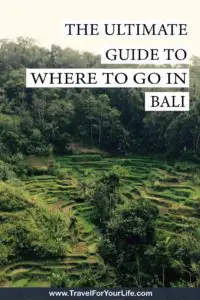
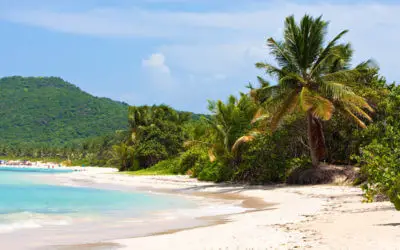


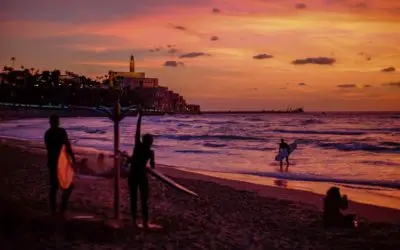

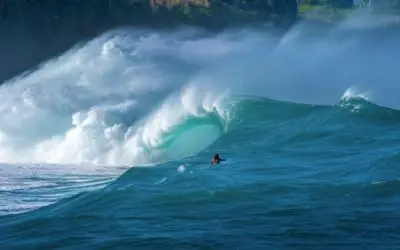

0 Comments